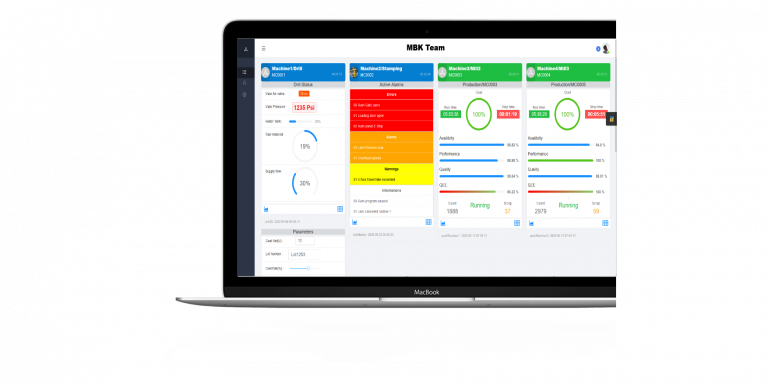
Overall equipment effectiveness (OEE) is a measure of how well a manufacturing operation is utilized (facilities, time and material) compared to its full potential, during the periods when it is scheduled to run. It identifies the percentage of manufacturing time that is truly productive. An OEE of 100% means that only good parts are produced (100% quality), at the maximum speed (100% performance), and without interruption (100% availability).
Measuring OEE is a manufacturing best practice. By measuring OEE and the underlying losses, you will gain important insights on how to systematically improve your manufacturing process. OEE is the single best metric for identifying losses, bench-marking progress, and improving the productivity of manufacturing equipment (i.e., eliminating waste)
Availability
The Availability portion of the OEE Metric represents the percentage of scheduled time that the operation is available to operate. The Availability Metric is a pure measurement of Uptime that is designed to exclude the effects of Quality and Performance. The losses due to wasted availability are called availability losses.
Example: A given Work Center is scheduled to run for an 8-hour (480 minute) shift with a 30-minute scheduled break and during the break the lines stop, and unscheduled downtime is 60 minutes.
The scheduled time = 480 minutes – 30 minutes = 450 minutes.
Operating Time = 480 Minutes – 30 Minutes Schedule Loss – 60 Minutes Unscheduled Downtime = 390 Minutes
Calculation: Availability = operating time / scheduled time
Availability = 390 minutes / 450 minutes = 86.6%
Performance and productivity
Also known as “process rate”, the Performance portion of the OEE Metric represents the speed at which the Work Center runs as a percentage of its designed speed. The Performance Metric is a pure measurement of speed that is designed to exclude the effects of Quality and Availability. The losses due to wasted performance are also often called speed losses. In practice it is often difficult to determine speed losses, and a common approach is to merely assign the remaining unknown losses as speed losses.
Calculation: Performance (Productivity) = (Parts Produced * Ideal Cycle Time) / Operating time
Example:
A given Work Center is scheduled to run for an 8-hour (480 minute) shift with a 30-minute scheduled break.
Operating Time = 450 Min Scheduled – 60 Min Unscheduled Downtime = 390 Minutes
The Standard Rate for the part being produced is 40 Units/Hour or 1.5 Minutes/Unit
The Work Center produces 242 Total Units during the shift. Note: The basis is Total Units, not Good Units. The Performance metric does not penalize for Quality.
Time to Produce Parts = 242 Units * 1.5 Minutes/Unit = 363 Minutes
Performance (Productivity) = 363 Minutes / 390 Minutes = 93.1%
Quality
The Quality portion of the OEE Metric represents the Good Units produced as a percentage of the Total Units Started. The Quality Metric is a pure measurement of Process Yield that is designed to exclude the effects of Availability and Performance. The losses due to defects and rework are called quality losses and quality stops. Reworked units which have been corrected are only measured as unscheduled downtime while units being scrapped can affect both operation time and unit count.
Calculation: Quality = (Units produced – defective units) / (Units produced)
Example:
242 Units are produced. 21 are defective.
(242 units produced – 21 defective units) = 221 units
221 good units / 242 total units produced = 91.32%
Reference: https://en.wikipedia.org/wiki/Overall_equipment_effectiveness
Please to this link for more information in french: https://fr.wikipedia.org/wiki/Taux_de_rendement_synth%C3%A9tique